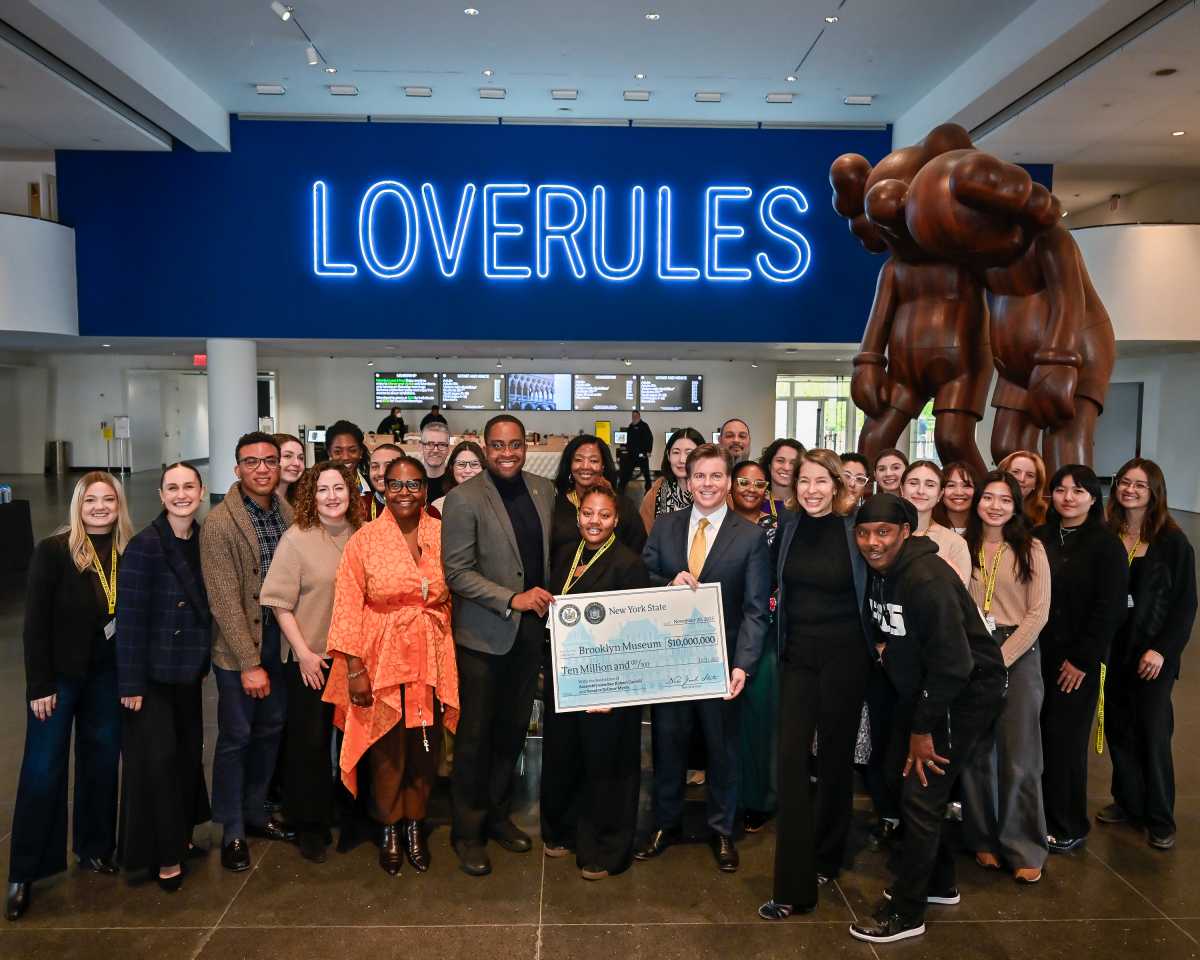
Keep calm, and marshal on.
Ensuring hundreds — sometimes thousands — of protesters stay on message, in formation and out of trouble is a task that requires specific training.
Alexis Danzig, a 57-year-old Harlem resident and Rise and Resist member, has been training protest marshals for more than 30 years.
“Marshals have a lot of different roles during an action, but what marshals are there to do is to help the organizers facilitate the action so that the protesters get to do what they’re there to do,” said Danzig, who became involved in direct actions in her 20s when she joined ACT UP during the AIDS crisis.
Rise and Resist, a direct action group formed in the wake of President Donald Trump’s election in 2016, uses marshals at every demonstration the group organizes. They are involved in both planning and executing a demonstration, particularly with regard to logistics, such as scouting a march route ahead of time for potential road blocks.
“And then there are the day-of activities, and the different things you have to watch out for and be aware of and help intervene,” Danzig said. “Marshals are a great information source, and we also de-escalate when you run into hassles like intransigent police and counter demonstrators and even the press.”
Marshals are usually distinguished from other protesters by an armband. Danzig said they won’t hand out the bands until the day of the action in order to avoid them falling into the wrong hands.
“If you’re a head marshal at a demonstration, you want to be able to look around and see people you can count on and then deputize them to do different tasks,” she said.
Each action requires a team of marshals proportionate to the number of expected protesters, according to Danzig. A demonstration with thousands of participants, such as the “Protect Mueller” march Rise and Resist organized in November, should have groups of marshals flanking the front, back and sides.
“And all of these marshals have different roles,” Danzig added.
Some marshals will be responsible for conveying information to demonstrators, from simple questions such as where the nearest subway station is to how someone can become more involved with Rise and Resist in the future. Others may set the pace of the march, act as a police liaison or be tasked with making sure protesters don’t wander into the street, which could put them at risk of being arrested.
Marshals are also responsible for distinguishing certain types of behavior.
“Marshals are not there to do the police’s job,” Danzig said. “But a marshal might want to point out . . . ‘if you put that sticker on a police car, you might get in trouble for doing that.’”
Since Trump’s election, one of the major functions marshals have taken on is to ensure that counter protesters stay separate from the demonstration, according to Danzig.
“One of the things that we do is when we see Trump [supporters] are encroaching on our space, we will send a person over and that person will introduce themselves to the people who are yelling. And usually what happens is they’ll stop yelling, because they’re being engaged in talking,” she said. “So already, we’ve won; the people who were yelling are no longer drowning out our message. And then we’ll ask them things like, ‘Do you believe in the First Amendment. . . once we’ve gotten that established, we can say well, ‘We have a First Amendment [right] to be here and so do you, but if you stand over there then people will understand that you have a different message than we do.’”
That kind of de-escalation tactic is what Danzig teaches when she’s called in to train new marshals. Marshal training, which Danzig offers for free, gives people an understanding of what their role is during a demonstration, whether it be a picket, a rally, a march, a sidewalk demonstration or a protest in the street.
“All of these have various levels of legality and sometimes risk of arrest,” Danzig said.
Direct action training and marshal training enable the average citizen to exercise their First Amendment right in a way that maximizes its impact, according to Danzig. She and a fellow veteran activist offer the training to anyone interested in learning how to run a demonstration, not just to members of Rise and Resist.
A training session is about an hour to an hour and a half long. Generally, the group will sit in a circle and go over a training sheet that delves into the various issues that can arise during a demonstration.
“We troubleshoot what might be going on that particular day, what could be a hassle, what could be a problem. We talk about what are some tried and true measures for de-escalating difficult situations and for dealing with trouble,” Danzig said. “We love it when people have already got a demonstration in mind because then we can talk about the particulars.”
But the “real training,” according to Danzig, begins when a new marshal participates in their first action along with experienced veterans who can show them the way.



































